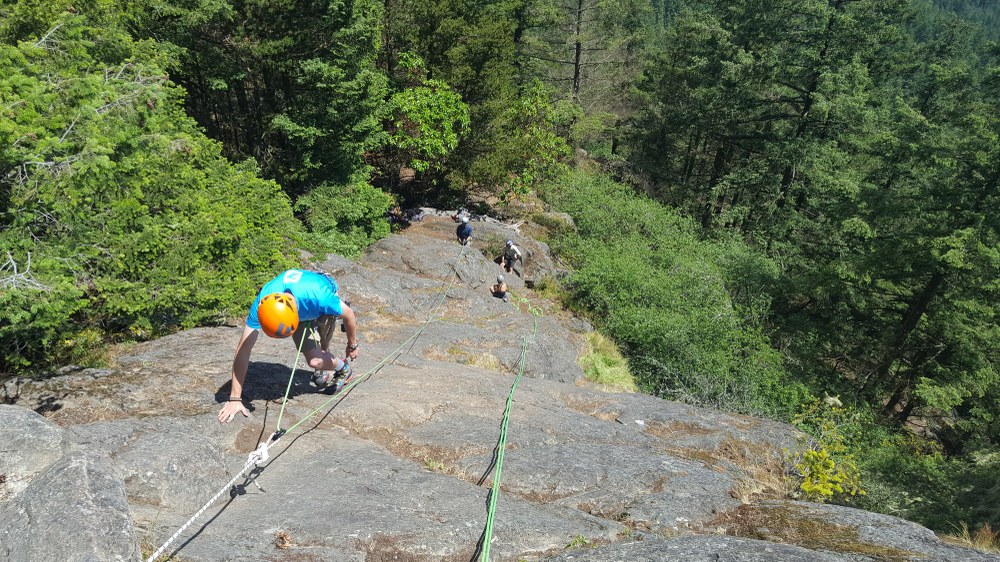
Friction climbing, also known as slab climbing, is a type of rock climbing where the rock face is angled to less than vertical and offers little in the way of traditional hand and foot holds. Rock of this orientation is often called a ‘slab’. Friction climbing requires the liberal use of ‘smearing’ or ‘frictioning’ techniques, where the climber uses a combination of balance and footwork to ascend a rock face.
fric·tion
/'frikSH(e)n/
The resistance that one surface or object encounters when moving over another
slab
/slab/
A large, thick, flat piece of stone, concrete, or wood
Almost every move in rock climbing can be categorized as one of three types:
- Face – face climbing is what you think of when you picture traditional rock climbing. You have a near-vertical wall (or beyond vertical wall, as in a ‘roof’) with different types of holds for you to grab and step on to. Face climbing is like what you will see at a climbing gym; essentially climbing a ladder on small holds.
- Crack – crack climbing is similar to face climbing, only you are using a fissure, or crack, in the rock to ascend the face. You jam a body part into the crack and that becomes your hold, and you ascend using a series of movements to place you further up into the crack.
- Friction (aka slab) – friction climbing is done on less-than-vertical faces, generally 45-80 degrees, with with no holds to grab or stand on and no cracks to jam into. You ascend using careful placement of your feet and by slowly shifting your body weight to balance your way to the top.
Many rock climbs will challenge you to use moves from all types of climbing, often starting off on slabbier sections, then moving to more vertical rock where you will encounter a combination of traditional climbing holds and cracks.
I love slab climbing because it poses unique challenges to climbers and teaches you to learn to trust your feet very early on. Working on friction technique early in your climbing career is important and will help you be successful as you approach more difficult climbs where delicate footwork and careful balance are key.
Many people are hesitant to try rock climbing because of a perception that you need to have good upper body strength to do so. Fortunately, rock climbing doesn’t favor body builders and instead relies on coordination of full body balance and strength.
You may have heard the admonition, “climb with your legs and feet, not with your arms and hands.” This is good advice. However, if there’s a big, juicy handhold within reach, you’re going to grab it and pull up on it – as you should. But that allows you to get away with sloppy with footwork, which can only take you so far.
On a friction slab you have no holds. Instead, it’s all about weight-over-feet and delicate movement. You cannot “cheat” with a pullup and you’re forced to focus on footwork, mastery of which will improve all your climbing. You will use the same rules of movement on ice, in loose couloirs, and even on steep, loose trails.
In the next blog in this series, we’ll go over the sequence of movements that allow you to ascend steep slabs using nothing but rubber on the rock and careful, deliberate movement. In preparation, here is an assignment: consider the penguin. How does a penguin walk? How is a human stride different? A penguin lives on ice; how does its peculiar side-to-side gait help it stay upright and not slip?
Already know what you're doing? Check out part 3: w.
Learn More
Our friction climbing committee leads evening seminars on to teach the fundamentals of friction climbing. Find these seminars, as well as climbing courses offered by all of our branches, here.
 Cebe Wallace
Cebe Wallace